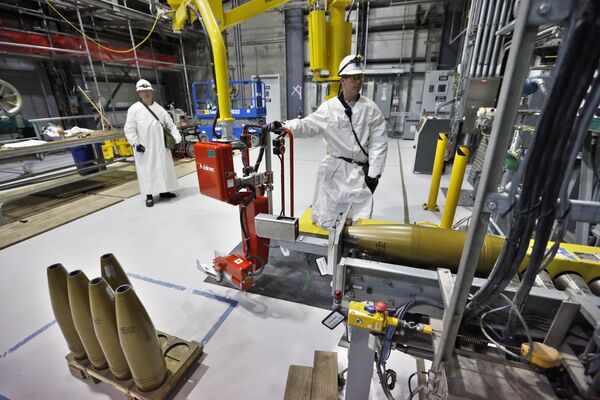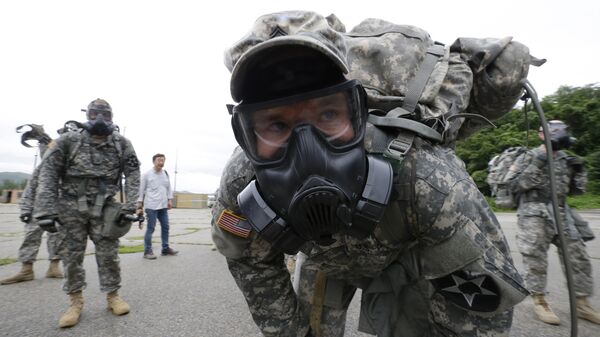The long dormant issue of chemical weapons was first "awakened" by the Syrian conflict, where these armaments were allegedly used. But the most recent chemical weapons scandal took place in the UK, where Russian ex-spy Sergei Skripal and his daughter were supposedly poisoned by the nerve agent A-234.
Britain and other western countries have accused Moscow of the so-called "attack" on Skripal, although official investigations have yet to be concluded on the matter and Russia having completed the process of eliminating of chemical weapons in accordance with CWC. At the same time, not all signees to the convention did so on time, despite having the vast resources to do so, such as the US, who still needs to destroy the last 10% of its arsenal. Sputnik has gathered curious facts on the American chemical weapons disposal program.

Signing the Convention and Missing the Deadline
At the time the US signed the CWC it possessed the second largest chemical weapons arsenal in the world after Russia, containing such horrific examples as VX, sarin and mustard gas — remnants of the Cold War standoff. After the final ratification of the accord in 1997 the weapons' destruction process began and the deadline for both countries was set for 2012. Both failed to do so in time and received extensions, Russia up to 2020, the US up to 2023. By 2010 the US had managed to destroy 75% of its stockpiles (48% for Russia).
READ MORE: OPCW Knows No Chemical Weapons Made in Russia's Saratov Facility — Official
It is worth noting though that in 1997 Russia's economy was still recovering after the transition from the USSR and external shocks that hit it in the process. What is more curious is that the pace of elimination changed — the remaining 52% were eliminated by Russia over the next seven years, three years ahead of schedule. According to the OPCW information, during the same period the US only destroyed 15% of its stockpiles, so it's unclear whether it will do so by 2023.

Stockpiles and Funding
Nearly 3,100 tons of chemical weapons are still to be destroyed by the US using plants in the Blue Grass Army Depot in Kentucky and the Pueblo Chemical Depot in Colorado. The Pueblo depot alone needs to eliminate 780,000 mustard gas shells. The process is neither easy nor cheap — since shells have explosive components in them a special blast-proof bunker must be built in order to dispose of such weaponry. Besides green protests in Colorado and Kentucky forced local and federal authorities to find a safer disposal method than a regular incinerator.
READ MORE: Russia Never Produced Novichok, Destroyed All Chemical Weapons in 2017 — Envoy
Another factor that may have halted the process is lack of proper funding. Over the first 10 years the US spent $20 billion and estimated it would spend $40 billion more. The annual funding, allocated by Congress is limited to $2 billion and that is obviously not enough. At the same time it's worth noting that Russia required only $10 billion ($2 billion was by the international community) to eliminate its stockpiles, which were bigger than that of the US (although most of them were not armed shells).




